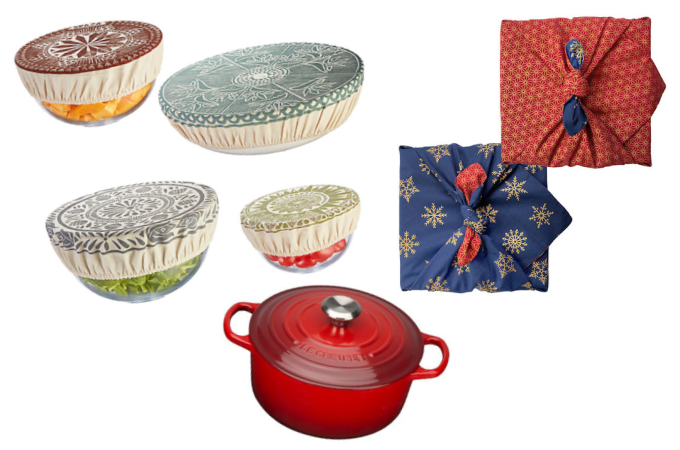10 tips for getting the most out of charity shops

Here’s my comprehensive guide to getting the most out of charity shops, where buying second hand can both save you money and help a good cause.
It’s an excellent way to give old items a new lease of life and keep them out of landfill, so it’s more environmentally friendly. There’s also the possibility of making some interesting and unique vintage finds.
I’ve been charity shopping for years, and I’ve also worked behind the scenes as a volunteer in a couple of different places so I can give you some useful insider information.
Location pros & cons
A true bargain can potentially turn up anywhere, but the rough rule of thumb is that the wealthier the neighbourhood, the richer the pickings.
People who donate items nearly always drop them off at their nearest charity shop for the sake of convenience, so fancy items usually turn up in fancy postcodes. The slight inconvenience of travelling to a shop that’s a bit more out of your way will nearly always pay off, as long as you have the budget for it.
Regarding budgets, charity shop staff in posher areas tend to be far more aware of the resale value of upmarket brands. They’re likely to price them accordingly.
Conversely, I’ve picked up some designer gems in more standard shops because the people who worked there didn’t recognise certain brands. For example, I bought a beautiful black Zandra Rhodes dress for £1.99 once because the sweet lady who was doing the sorting and pricing mistook it for a nightie.
Make a list, but be an opportunist
I generally go into a charity shop with a fairly good idea of what I want, which tends to be clothes and other items that will fit into a capsule wardrobe. That way you can be certain you’ll get plenty of use out of them, which is better for your finances and also for the environment.
It can be really helpful to draw up a list of priority items beforehand to remember to concentrate on specific parts of the store. That could be anything from particular books you’d love to read, to costume jewellery to a 1970s casserole dish. Seek and ye shall find, eventually.
While you’re looking for what’s on your list you may turn up other unrelated bargains, which is a big part of the fun. Stay open to the possibility of that too, as long as they’re things that you’re actually going to use and love, and they’re affordable.

Shop early…
Most charity shops rely on volunteers, with maybe a few paid employees, so staffing levels can vary – but they all tend to keep on top of their jobs in a fairly regular fashion.
People who donate goods are most likely to drop them off at the weekend, and that’s also when the shop is busiest with customers, so donations usually build up a bit in a side room or back office. That tends to mean a backlog of bags and boxes to sort though, then potentially price up and put out for sale.
If you’re able to get to a charity shop on a weekday, you can find lots of new and hopefully interesting stock hitting the shelves and racks mid-morning on a Monday, and sometimes also Tuesday if it’s been a very busy weekend. January’s often the best month, as so many people start decluttering their homes after Christmas, but it can also peak after Easter and various Bank Holidays.
Can’t get there during the week? Your next best bet is first thing on a Saturday morning, because a well-organised shop will have prepared for a busy weekend.
… And shop often
While it pays to be aware of the general rhythms of drop-offs and restocks throughout the week and through the seasons, remember that there are always outliers as well as averages.
Visit your favourite shops regularly to improve your chances. A quick snoop around the store is often enough for spotting what’s new. You never know what might get donated, or when it will turn up.
Make friends with the staff
It goes without saying that you should always be nice to the volunteers and the paid staff. That’s a given anyway, especially if they’ve been kind enough to give up their spare time for free to help out their chosen charity.
If you’re a friendly regular visitor, and you ask nicely, the staff might tip you off about recent arrivals that are still in the stockroom. It doesn’t hurt to let them know that you’re looking for something in particular.

Systematic approach: clothing search
Don’t make an automatic assumption that anything on a particular hanger is a particular size – check the labels yourself and have a good snoop around generally. It’s quite common for clothes to end up on the wrong sized hangers, either because of rushed staff or customers making a bit of a mess.
If you see a colour, pattern or fabric that you like, grab it! Then take a closer look, even if it’s in the ‘wrong’ section.
Give promising-looking garments a thorough check:
- General condition
- How well it might go with other clothes you own
- Fabric type, and how worn it generally looks
- Seams and hems, loose threads
- The state of any zips, buttons or other fastenings
- Rips, snags, holes, areas where fabric is wearing thin
- Stains, especially around collars and underarms
Also consider the general fit of the garment – slightly too large is often better than slightly too small, for example. Try it on if possible and have a good look at how it clings, skims or hangs.
If you can’t try it on, hold it up to yourself or even measure it. I have a small retractable measuring tape that I sometimes bring along with me, to check waistbands and inside leg measurements.
Is it just right, or is it a fixer-upper that might need some mending or alteration? Don’t kid yourself if it needs a lot of work to make it right, unless you have all the time, skills and equipment you need, or you’re willing to pay for professional alterations.
Shoes, bags & other accessories
A good wardrobe isn’t just about clothes. Shoes, bags, scarves, belts, jewellery and other accessories bring the most basic choices to life, and buying them second hand can save a small fortune.
Again, look carefully at their general condition. Use an especially critical eye with footwear, checking soles, heels, insoles, uppers, buckles, laces and other fastenings. A good cobbler can fix a multitude of problems, but there does come a point where some shoes are too far gone.
More expensive accessories often end up in display cabinets, so don’t forget to check those out if you’re looking for something special. Sometimes the most beautiful vintage or recent pieces are hiding in there.

The rest of the shop
Nearly all charity shops have a section that sells kitchenware and tableware, linens, ornaments and other bric-a-brac, wall art, mirrors, storage, books and so on. One person’s trash is another person’s treasure, and it’s amazing what can turn up here.
Crouch down to see what’s hiding at the back of lower shelves if you can, as these areas are often overlooked and may be hiding some interesting finds.
If you like to sew, don’t forget to check any curtains, sheets and other linens, in case they’re made of great fabric that can be bought cheaply and repurposed.
You can also sometimes find completely new items that have been donated by various brands and chains. I’ve recently seen new furniture, washing machines and garden items put out for sale, as well as last-season or remaindered fashion stock.
It doesn’t always work out
There’s no guarantee that you’ll find something you want when you visit a charity shop, and in a strange way this randomness is still part of the fun.
Be prepared to walk away empty handed sometimes, and save your money for another time or place.
If you’d still like to make a contribution to a particular charity, you can do so via another route such as making a financial donation or dropping off something they’ll be able to sell to raise funds.
Sometimes the stock gets moved
Have you ever donated something to a charity shop, only to never see it out on the racks? In the past, high value items were often spirited away to central hubs and private sales in certain charities.
Nowadays these premium items are mostly moved into an online shop, and either auctioned or priced for immediate sale. Individual charity shop branches sometimes have their own eBay mini-shop, but the best online bits can turn up on the charity’s main website too.
If you can’t find what you’re looking for in the physical shops, you may have some luck looking online instead. For example:
- Oxfam online shop (books, clothes, entertainment, home etc)
- Full UK eBay charity shop listings (all main charities)
- British Heart Foundation eBay store
- The Cancer Research eBay store
- Sue Ryder pre-loved store
It’s particularly useful if you’re looking for specific items – just use keywords in the search bar – but it works nicely for a general browse too if you have the time.
In the last couple of years there have also been some interesting charity fairs and other events around the UK. This includes multi-charity efforts such as Charity Super.Mkt which I’ve covered recently.
Enjoyed this post? You may also like:
Hope you’ve enjoyed this big guide to getting the most out of charity shops.
If you’re an avid charity shop user too please feel free to share some of your own best tips.
This site may get paid a small amount of commission for purchases made after clicking some of the links in this post. There’s no extra cost to you & it keeps us going so please support us if you can.







